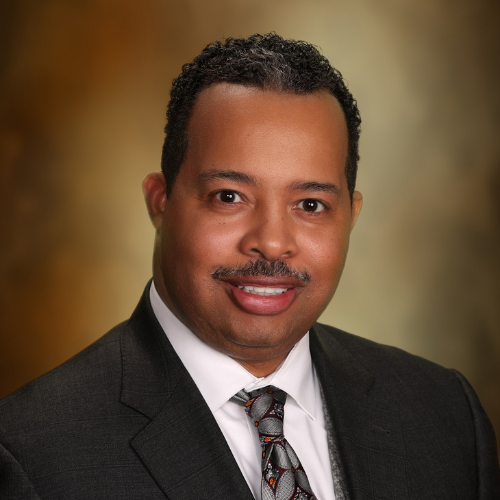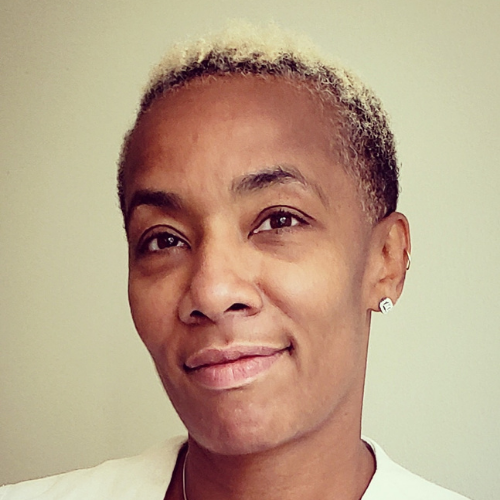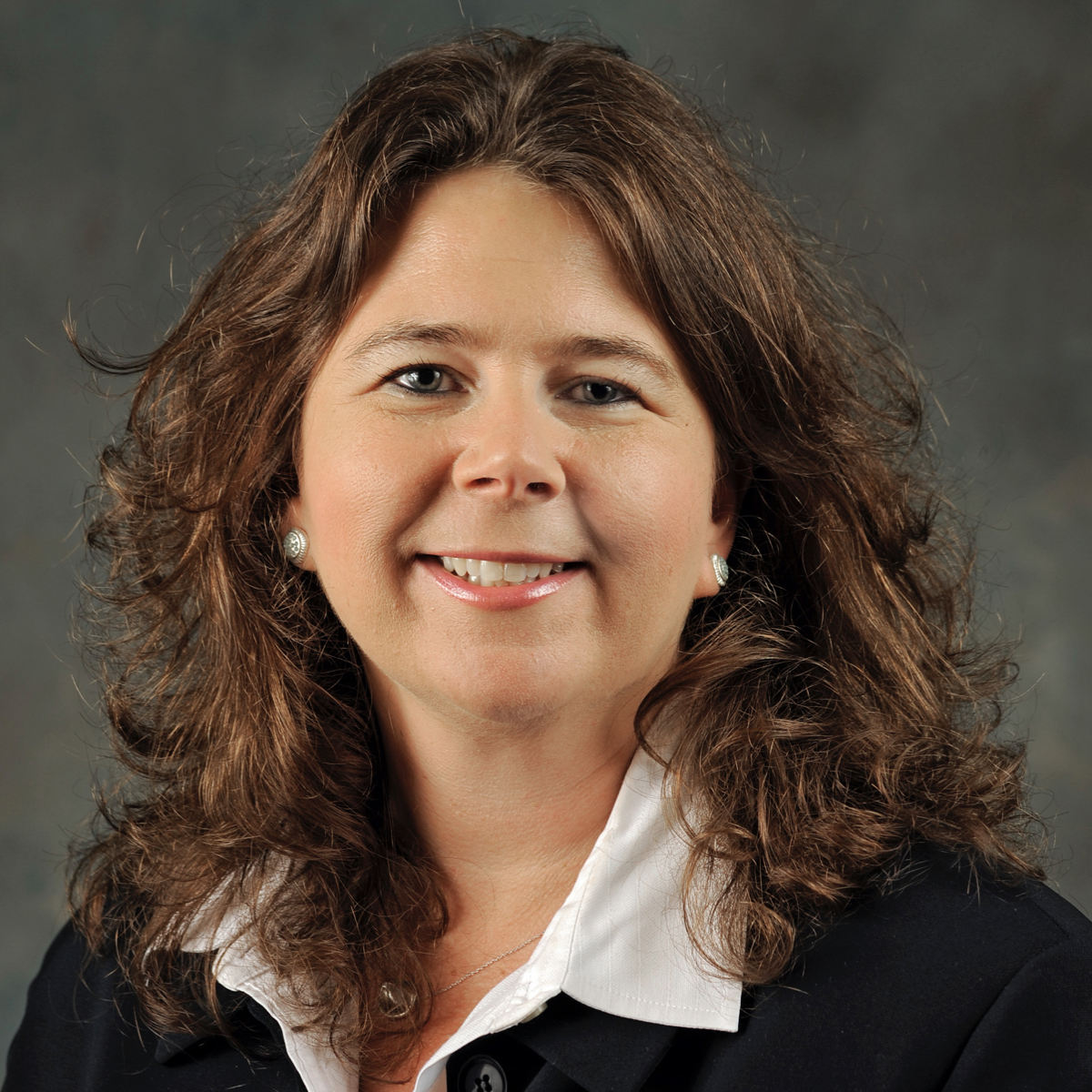Five Minutes With John Hall
 The HAND network is hard at work to address the growing housing affordability challenge across the Capital Region. Five Minutes With is a series highlighting these members and other stakeholders. This informal conversation delves into their recent projects, the affordable housing industry, and more. In this edition, we had a conversation with John Hall, Loudoun County’s new Director of Housing & Community Development. Check out our dialogue below to learn about his nearly 30-year career, what excites him about working in the DMV region again, and what he believes is a “secret sauce” to creating more equitable communities in our region!
The HAND network is hard at work to address the growing housing affordability challenge across the Capital Region. Five Minutes With is a series highlighting these members and other stakeholders. This informal conversation delves into their recent projects, the affordable housing industry, and more. In this edition, we had a conversation with John Hall, Loudoun County’s new Director of Housing & Community Development. Check out our dialogue below to learn about his nearly 30-year career, what excites him about working in the DMV region again, and what he believes is a “secret sauce” to creating more equitable communities in our region!
HAND: Congratulations on your new role as Loudoun County’s new Director of Housing & Community Development! You have extensive experience in housing and community development – can you tell us about your journey to this point?
JH: Thank you very much! I cannot believe I have been working nearly 30 years. My journey has been so fulfilling. I am grateful for having the privilege to work with so many great communities. I started in the banking industry with commercial loan servicing and real estate loan administration in Dallas, Texas. I pursued graduate studies in New York to focus on poverty alleviation activities such as workforce development and all other social welfare policies. I never imagined integrating my banking experience. In fact, in my first position after graduate school, my boss told me she hired me because of my banking experience, which is what I was trying to escape. What I found over the years is that the banking experience provided me with an acute awareness of affirmative covenants, regulatory requirements, as well as commercial acquisition and development knowledge.
I leveraged this knowledge with workforce development to build neighborhood assets with a couple of community development corporations in Texas. As a non-profit developer, I worked with elected officials, board members and communities to increase rooftops and generate economic activity. My position in Lubbock, Texas afforded me the opportunity to work with everyone in order to effectuate components of John McKnight’s Asset Based Community Development model.
From there, I initially arrived in the mid-Atlantic region working at the US Department of Housing and Urban Development. I endeavored to preserve affordable housing on a national level by working in the Mark-to-Market program with qualified non-profit organizations. Wanting to be closer to the action, I became a field office director at HUD for the capital region and later for the Commonwealth of Virginia. I left this role as I was appointed agency director for the District of Columbia’s Department of Housing and Community Development (DHCD). We achieved a lot at DHCD with affordable housing production, but what I am most proud of is the interdepartmental collaboration that institutionalized permanent supportive housing using the agency’s annual consolidated Notice of Funding Availability. Since then, I have gained more experience at the local level overseeing entitlement grants and public housing agencies.
HAND: You were once the director of DC’s Housing and Community Development Department. What excites you about working in the DMV region again?
JH: I am elated to return to the DMV. There is no place that possesses the intellectual capital this region has. I am among friends in the business and look forward to re-activating networks to do great things together that benefit the residents of Loudoun County and the whole region.
HAND: As director of a newly established independent department, what excites you about your leadership role in this new department? Do you foresee any challenges? Are there key takeaways from your experience thus far that you are bringing into your new position?
JH: I am excited about the commitment of Loudoun County’s elected officials to provide attainable housing for everyone. The County’s Unmet Housing Needs Strategic Plan (https://www.loudoun.gov/5278/Unmet-Housing-Needs-Strategic-Plan) has 143 key action items for us to create the opportunity for victory throughout the county. Implementing public policy is my forte, and I am overjoyed to join the team.
Housing and community development is hard everywhere. Immediate challenges will be adjusting to rising mortgage interest rates and inflation. To mitigate this, we must optimize resources with strategic collaborations to produce results.
I have always maintained a strong focus on compliance. That may go back to my banking days. We want to spend money wisely and appropriately to reduce any chance of grantors requiring repayment. I also know that we must be results driven in a relatively short timeframe. Having shovel-ready projects in the development pipeline is key to delivering for county residents.
HAND: According to our Housing Indicator Tool (HIT), 45 percent of renters in Loudoun County spend more than 30% of their income on paying rent. How do you see your role in helping to navigate this issue?
JH: Households should not be rent-burdened. My objective is to triage this challenge in various ways. One way is to examine transit-oriented development opportunities. Metro’s Silver Line recently commenced service in the county. I see this milestone as an effective way for households living near stations to bundle their housing and transportation costs to improve their quality of life. Enhancing programming such as the Housing Choice Voucher Program is another mechanism to reduce rent burden. Participants can leverage the voucher with the Family Self-Sufficiency Program to increase wages whereby the differential in the rent increase is matched by the program and set aside in an escrow account. Often times participants earn enough for down payments to purchase a home while then using the voucher share toward a mortgage payment. I would like to see more emphasis placed in this regard to increase homeownership, generate wealth and stabilize families.
HAND: Do you believe there is a “secret sauce” to addressing housing affordability and creating more equitable communities in our region? If so, what do you think that is? What do you think is the largest obstacle?
JH: I believe the secret sauce is collaborating partnerships, where all parties bring resources for a specified period of time. I do believe, however, that despite competing priorities, we all get done what we want to get done. We just have to identify partners with shared vision and commitment in making our communities stronger.
HAND: What is your “why”? What keeps you motivated to continue your work in this space?
JH: My upbringing emphasized for me to take care of people around me and not just family but neighbors and community. So, I am motivated to be the voice for people who are not in the room and who may not know how to use available resources to improve daily living.
HAND: What might you be doing if you weren’t working in this industry?
JH: I would be teaching financial literacy to increase the number of people who break cycles of poverty.
Five Minutes With Ayesha Hudson
 The HAND network is hard at work to address the growing housing affordability challenge across the Capital Region. Five Minutes With is a series highlighting these members and other stakeholders. This informal conversation delves into their recent projects, the affordable housing industry, and more. In this edition, we had a conversation with Ayesha Hudson, the first loan recipient under Equity in Action (EIA), HAND & Greystone’s debt and equity platform. Check out our dialogue below to learn about her 20+ year career, why she sought to get her project financed by the EIA, and what she believes is a “secret sauce” to creating more equitable communities in our region!
The HAND network is hard at work to address the growing housing affordability challenge across the Capital Region. Five Minutes With is a series highlighting these members and other stakeholders. This informal conversation delves into their recent projects, the affordable housing industry, and more. In this edition, we had a conversation with Ayesha Hudson, the first loan recipient under Equity in Action (EIA), HAND & Greystone’s debt and equity platform. Check out our dialogue below to learn about her 20+ year career, why she sought to get her project financed by the EIA, and what she believes is a “secret sauce” to creating more equitable communities in our region!
HAND: Congratulations on being the first loan recipient under HAND & Greystone’s Equity in Action program! We’ll get into that shortly, but first, can you tell us about your career journey up until this point?
AH: My career journey has been fulfilling! I am grateful to have achieved a 20+ year career in public service while simultaneously acquiring and managing investment properties. Both pursuits allowed me to impact others’ lives in very positively significant ways. When I consider my trajectory, it makes perfect sense that my path has led me to real estate development. I am motivated, through servant leadership, to create and preserve livable spaces in communities that are often overlooked. My varied career has given me a hands-on, inside look at my communities’ pain points while my empathy was groomed for action. I am looking forward to contributing more by way of quality, livable housing, and resident programming.
HAND: Now, let’s talk about Equity in Action (EIA), a debt and equity platform designed to increase opportunities for black and brown real estate developers. Can you tell us why you sought to get your project financed by the EIA program?
AH: After engaging HAND’s membership and programming, I believed the EIA program was sincere. Then when I met the lending team, I was convinced. I began to see my loan application as a vehicle for positive change that would culminate with building improvements for my residents, growth of my business, and encouragement for other black and brown developers as they seek fair financing options.
HAND: Tell us more about the project. What communities do you plan to serve, and what differentiates it from others in our region?
AH: This project is serving the beautiful Deanwood community, which has historically been underserved. I grew up within 3 miles of the building and would later respond to medical emergencies as a paramedic in this very neighborhood. While it can be a challenge to preserve housing in the lower socioeconomic areas of the District, our project fuses the business activity of real estate with a social responsibility to others. As an activated real estate development company, we are planning to add renewable resources and a more pleasing aesthetic to our block. We are surrounded by neighborhood amenities, including public transportation and recreation making it a hidden jewel. We are looking forward to receiving some shine!
HAND: How does it feel to be the first loan recipient under the Equity in Action program?
AH: I feel enthused, empowered, and better prepared to do this work! My celebration, however, is tempered by the realization of the long-standing need for these kinds of lending initiatives. Once others follow, more black and brown developers can bring their full energy to the table so we may create better communities for our own communities.
HAND: Many of us are familiar with the history of racism and its impacts on housing. Can you speak on how you approach your work in this space? How can developers of color in the real estate industry move the needle in a different direction?
AH: I approach my work in this space with a mix of empathy and realism. As I hone my development skills, I am guided by my spirituality and connectedness to the black community. Since my first investment in 1999, I have had an affinity for properties that, on first look, appear blighted. Knowing that our community yields so many hidden jewels, I am conscious of supporting it with the best intentions; financial reward has followed. Moving any needle requires coordination and attentiveness. As more developers of color align our skills, resources, and grit with one another, we will move the needle one project at a time. Relationship building and mentorship are integral to its success.
HAND: Do you believe there is a “secret sauce” to addressing housing affordability and creating more equitable communities in our region? If so, what do you think that is? What do you think is the largest obstacle? –
AH: I believe the lack of housing affordability will need to be systematically dismantled through housing legislation. The laws that govern financing, tax implications, and subsidies present layers of restriction already germane in undervalued communities. To me, the largest obstacle is fear of change. The perceived social norms of poor people are woven into real estate development. As political decision-makers revamp laws to create more inclusivity, the housing landscape will inevitably change.
HAND: What is your “why”? What keeps you motivated to continue your work in this space?
AH: I feel compelled to share my resources and influence in black and brown communities. I enjoy working with people and being a part of a solution. Being a housing provider allows me to take part in both callings. My grandfathers were involved in various real estate endeavors to include owning and operating a well-shopped convenience store in West Philly to running a farm in Waldorf, Maryland. They imparted the importance of building a legacy, having self-reliance, and always sharing. This opportunity to change my life and those around me is what keeps me motivated.
HAND: If you weren’t working in this industry, what might you be doing?
AH: In my dreamt-up career, I’d be a part-time civil rights trial attorney who travels the world interviewing and writing about interesting people.
Five Minutes With Maia Shanklin Roberts
 The HAND network is hard at work to address the growing housing affordability challenge across the Capital Region. Five Minutes With is a series highlighting these members and other stakeholders. This informal conversation delves into their recent projects, the affordable housing industry, and more. In this edition, we had a conversation with Maia Shanklin Roberts the Vice President
The HAND network is hard at work to address the growing housing affordability challenge across the Capital Region. Five Minutes With is a series highlighting these members and other stakeholders. This informal conversation delves into their recent projects, the affordable housing industry, and more. In this edition, we had a conversation with Maia Shanklin Roberts the Vice President
of Real Estate Development for Preservation of Affordable Housing. Check out our dialogue below to learn more about the Barry Farms project, her work experience, and her words of wisdom for the next generation of leaders of color!
HAND: Congratulations on your new role at Preservation of Affordable Housing! Are there key takeaways from your experience thus far that you are bringing into your new position?
MSR: Key takeaways: Engagement of community is essential in a successful affordable housing project. In my role, I am responsible for taking inventory of all of the various stakeholders on the project and discerning how best to utilize their skills/resources for the project. And most importantly, I have to be thoughtful in how to engage marginalized voices in the process because it is these stakeholders that are most impacted by my decisions.
HAND: You have extensive experience in a wide range of complex affordable housing development and real estate transactions – can you tell us about your journey to this point?
MSR: I was an affordable housing attorney from 2017 to 2021. When going to law school, I knew that I wanted to do work that could create systemic change in low-income and urban communities. It was the sole purpose of going to law school. I am from DC, where I learned firsthand the realities of the impact divestment had on black and brown communities. Then after graduating college, I came back to DC to work for the Peaceoholics, where I worked with youth in gangs and crews and learned that unless we bring real resources to their communities – there would be no way we could truly curb the violence and other issues that plague our community. That lead me to law… and my desire to work to provide economic resources to my community. I loved it until I realized that I could do more. I could be that designer and bring my skills and talents, and perspective as a black woman from the community into my work.
HAND: What excites you about your new role? Do you foresee any challenges?
MSR: Working on affordable housing projects in DC excites me the most. Barry Farm is a major redevelopment, and it is my job to work with my team to imagine and implement a plan that could transform the lives of former residents and the DC natives. That’s huge! Of course, there will be challenges. On top of the challenge of developing a multi-phase project – infrastructure and vertical buildings… we also must address issues like gentrification, protecting former residents’ right to return, systemic poverty, and equity all within the project.
HAND: Do you believe there is a “secret sauce” to addressing housing affordability and creating more equitable communities in our region? If so, what do you think that is? What do you think is the largest obstacle?
MSR: Not necessarily secret sauce… I believe you just have to operate with the assumption that your purpose as a developer of affordable housing community is to be the voice for the underserved and marginalized. Therefore, it is your job to increase opportunity for diverse and equitable participation at all levels in the project, and to ensure that you deliver a project with resources and amenities that provide equitable outcomes for the community served. I think the largest obstacle is that what’s “market” is not equitable. And so you constantly have to push this agenda with all stakeholders from your financing partners, to contractors, to national commercial tenants. In all ways, you have to ask on every call/with every decision, what more can be done to be inclusive and maximize opportunity and benefit for those who are not sitting at this table because of systemic racism and marginalization.
HAND: What is your “why”? What keeps you motivated to continue your work in this space?
MSR: There are not many people in leadership that look like me, and I want to change that. Our work directly affects black and brown communities. We must have more people of color in leadership and working on these transactions to ensure that they are best served.
HAND: Keeping in mind the history of racism and its impacts on housing, how can leaders of color or, more specifically, women leaders of color in the real estate industry move the needle in a different direction?
MSR: Your voice is needed. Don’t allow anyone to take that away from you. I think the most significant barrier is for the myriad of reasons we aren’t seen… I make it my business to be seen. I am passionate about my work and I don’t have any fear of speaking up and being the only one in the room if I have to be.
HAND: If you weren’t working in this industry, what might you be doing?
MSR: I would probably be doing similar work… lol, and traveling to warm and sunny destinations with my family.
From “Cradle to Career” | APAH’s Mission to Support the Next Generation Fund

Arlington Partnership for Affordable Housing (APAH) has received an exciting leadership gift from Tim and Diane Naughton, which was matched by AvalonBay Communities, to directly impact children and youth living in APAH communities from “cradle to career”. This combined $500,000 gift is part of a holistic strategy around youth programming called the Next Generation Fund.
This initiative seeks to foster the expectation and provide support to enable every child living in an APAH community to graduate from high school and pursue college, or vocational training, to achieve a family-sustaining job that allows them to thrive.
Check out the official press release here.
Five Minutes With Christy Zeitz
 The HAND network is hard at work to address the growing housing affordability challenge across the Capital Region. Five Minutes With is a series highlighting these members and other stakeholders. This informal conversation delves into their recent projects, the affordable housing industry, and more. In honor of Women’s History Month, we are excited to share this special edition of Five Minutes With. In this edition, we had a conversation with Christy Zeitz the CEO of Fellowship Square. Check out our dialogue below to learn more about Fellowship Square’s farewell tour, Christy’s advice on how to make affordable housing projects work, and her words of wisdom for the next generation of female leaders!
The HAND network is hard at work to address the growing housing affordability challenge across the Capital Region. Five Minutes With is a series highlighting these members and other stakeholders. This informal conversation delves into their recent projects, the affordable housing industry, and more. In honor of Women’s History Month, we are excited to share this special edition of Five Minutes With. In this edition, we had a conversation with Christy Zeitz the CEO of Fellowship Square. Check out our dialogue below to learn more about Fellowship Square’s farewell tour, Christy’s advice on how to make affordable housing projects work, and her words of wisdom for the next generation of female leaders!
HAND: As CEO of Fellowship Square, you bring extensive leadership experience in management, fundraising, marketing, and program development. Can you tell us about your journey to this point?
CZ: I do my best work when interacting with others, so I’ve always sought opportunities to meet new people, learn from them, and take the next step forward in my career. Along every step along my way to my current position as CEO of Fellowship Square, I’ve proactively learned from others, embraced challenges, and worked hard to attain stretch goals. Those priorities have served me in every position I’ve ever had – across all the organizations I’ve worked with and functions that I’ve had. The guiding focus of my professional life has been to make a measurable difference in the lives of others, and this is truly the most rewarding part of my journey.
HAND: What strategic financing and collaboration strategies can you share to ensure that affordable housing providers like Fellowship Square can continue to serve vulnerable residents with dignity over the long term?
CZ: To make affordable housing projects work, it takes smart, creative people working collaboratively. Fellowship Square is one of the leading providers of affordable housing and services to low-income seniors in the region, operating 670 units and serving roughly 800 residents. We’ve put structures in place so that the rental cost is never more than 30% of a resident’s annual income – making our communities some of the most affordable in the region for seniors. The key strategies that underly our work: collaboration, creativity, and openness to new approaches. Whether for the benefit of an owner, investor, residents, or the community as a whole, there are news ideas and options that must be uncovered and teased out in some way. If we go into a project thinking we are going to do it the way we’ve always done affordable housing projects, there will be a missed opportunity somewhere. Openness to new ideas is key. We and other housing nonprofits like us have the unfortunate challenge of competing against the for-profit developers for things like land and construction costs. These costs can be staggering – and create major barriers to building more affordable housing. We must be open to new ways of thinking, new partnerships and the unexpected twists and turns that get our projects done. Sometimes the “right” approach requires writing a new playbook.
HAND: Fellowship Square has launched a “farewell tour” of the 1970’s Lake Anne Fellowship House in preparation of moving 300+ residents from the original 50-year-old building to a brand-new state-of-the-art residence across the street. Can you tell us more about this undertaking, why it’s important and any challenges you may foresee?
CZ: Lake Anne Fellowship House, originally built in 1970, was the first senior housing and first affordable housing developed in Reston. Over the past 50+ years, the property has provided housing to more than 1,300 low-income seniors. Yet the building was showing its age and upkeep of the property was exceeding the amount residents pay in rent and the subsidies received from HUD. About seven years ago, our Board decided that the best path forward was to replace the existing 240-unit building with a new facility.
This is where creativity and openness to new approaches came in. We embarked on a joint venture with Enterprise Community Development with whom we were able to craft a novel solution: instead of relocating the residents temporarily until a new building was built on the existing footprint, we would construct a new building on an underutilized portion of the current site. This would substantially reduce logistical demands as well as the number of relocations our residents would need to make. Under this creatively structured deal, once our residents are moved into the new building this spring, Fellowship Square will demolish the original building, market rate townhouses will be developed, and the land sales proceeds will be reinvested as part of the overall financing package.
Of course, financing for affordable housing is never simple. The development team needed to secure project based rental vouchers for 100% of the units and create the right mix of financing for such an ambitious goal. In addition to our partnership with ECD, financing also came from diverse arrangements with Virginia Housing and the Virginia Housing Trust Fund, Virginia Community Capital, Low-Income Housing Tax Credit equity provided through Enterprise Housing Credit Investments by Capital One, Enterprise Community Loan Fund, Fairfax County Redevelopment and Housing Authority, and, of course, HUD. In fact, much time and effort were expended convincing HUD as to the critical need to preserve the deep subsidies for the existing very low-income residents and making sure they would be eligible to move to the new building so that all residents who wished could be accommodated.
All of this was accomplished. We broke ground in 2020 (in the middle of the pandemic!) and residents will relocate this spring to the newly built Lake Anne House. The property comes with some of the best amenities, services, and environmentally sustainable features. Residents will appreciate its gym, arts room, game room, wellness clinic, beautiful outdoor terraces, wifi throughout the building and more. We will also continue to have a full time Service Coordinator onsite to serve our residents.
But the grand finale is bittersweet – for the residents who have lived at Lake Anne Fellowship House for many years, for long time staff who have worked in that building for years, and for Reston community members who have visited the property, strolled through the hallways, and visited friends and family there. This is a major change, and I know there will be some tears shed. Sometimes it’s hard to say good-bye even when a bright new future lies ahead. We have a ”farewell tour” of programs to communally and collectively celebrate our community, this building, and our memories here as we prepare for the move to the new residence.
HAND: Do you believe there is a “secret sauce” to addressing housing affordability and creating more equitable communities in our region? If so, what do you think that is? What do you think is the largest obstacle?
CZ: There’s no “secret sauce” to housing affordability. In my mind, it’s more like a “Las Vegas buffet” of options, opportunities, considerations, and collaborations – and the plate for each region may be filled quite a bit differently. In the Washington DC Metro area, our housing needs span the spectrum of price points, amenities, services, and financing. The affordability factor is a core fundamental part of supporting the local workforce. As such, creating more affordable housing has to be a community effort – it can’t just be left to the housing advocates to fight for. The community as a whole has to come together to embrace housing affordability for all. The more collaborators at the table, the more varied our buffet of options and the more success we can have.
The type of affordable housing will vary community to community, but collaboration across organizations will always be key. For example, very low-income residents, especially those below 30% AMI, require significant subsidies. Beyond rental assistance, this often includes the need for the provision of services including transportation, healthcare, food assistance, healthcare, mental health services, and more. This means that affordable housing management must also be able to access public and private resources to augment standard housing management activities. Fellowship Square accomplishes this by building a deep network of resources within our local community to plug into. Our vulnerable residents can access care managers who can provide or refer the residents to appropriate services in our community. This is important to build and foster.
HAND: In March we celebrate Women’s History Month and International Women’s Day. Given your extensive leadership experience, what advice would you give to the next generation of female leaders? What do you think is the most significant barrier to female leadership, and how have you overcome those barriers?
CZ: Few things make me prouder than to see young women asserting themselves and stepping up when they have an opportunity to lead. There are so many valuable traits and perspectives that we all benefit from when women are in leadership positions. For today’s emerging female leaders, they cannot sit by and wait to be asked to lead – it’s much more important that they seek out and even create those opportunities.
Sometimes the biggest barrier to reaching the next level in our careers is how we hinder ourselves. Whether through self-doubt or even other commitments, it comes down to priorities and having a vision for our own professional futures. Nothing will be handed to us on a silver platter – nor should it. Working hard and getting ahead is where you learn to grind it out and become a true inspirational leader. Leadership comes from experience, it comes from perspective, and those both come from hard work. But hard work that results in great leadership cannot be achieved in the shadows!
Women must always put themselves at the table – and in my experience, there’s always a way to have your voice heard in those circles, whether directly or indirectly. Regardless of someone’s position on a staff flowchart, each individual person can be a leader in some respect. Young women who may feel they aren’t in a position of leadership can still have an important impact on the trajectory of projects, assignments, teams, and workplace culture. Show initiative and you will be rewarded.
As you can tell, I’m very much an optimist. I always believe that what I want to happen can happen, it’s up to me to figure out how to make it happen. And the only thing holding me back is my own ideas of what I can and cannot accomplish. I hope other women can learn from this.
HAND: What is your “why”? What keeps you motivated to continue your work in this space?
CZ: Working in the affordable housing space is a little like making dreams come true. For too many people today, having a safe, affordable, and stable home can seem out of reach. Being a part of helping to make this dream of housing happen is a daily motivator for me. Nearly every week, I get at least one call from one of our 800+ residents who wants to tell me about what’s going on in their life. They never hesitate to say how thankful they are that they live at Fellowship House. This is what keeps me motivated every day. I am so proud of the work my organization does, and really appreciate the time and effort the Board and staff put into our mission.
HAND: If you weren’t working in this industry, what might you be doing?
CZ: I’d be living in the Caribbean, working on my side hustle as a fiction writer…and helping anyone who asked!
Latest from Facebook
[custom-facebook-feed]
Annual Meeting Important Information
Payments: Orders placed on the event registration page are not confirmed until payment is received. A confirmation email will be sent to the email address listed in your registration. If you paid by credit card, a receipt will be sent to the email address listed in your registration. If you mail a check, all payments must be received within seven days of completing your registration form. Checks should be remitted to: HAND, PO Box 48386, Washington, DC 20002
Guest List & Dietary Preference: If your registration includes a luncheon table or multiple guests, please submit guest names and menu choices by May 1, 2020. Submit guest names here.
Housing Expo: Plan to exhibit? Download the Housing Expo FAQs here.
Omni Shoreham Hotel Room Block: For attendees looking to secure overnight accommodations on May 25th, HAND has secured a rate starting at $189 for conference attendees. There are a limited amount of rooms available, so visit this link today to reserve your room. May 10th is the last day to secure a room at the discounted rate.
Ad Submission: The artwork for advertisements should be submitted to annualmeeting@handhousing.org. You can download the ad spec sheet here. Deadline for ad submission is April 13, 2020.
Cancellations & Changes: If you wish to cancel or change your registration for the Annual Meeting & Housing Expo, please send a request in writing to annualmeeting@handhousing.org. All cancellation requests made prior to April 27th will receive a 50% refund. For cancellation requests made after April 27th, no refund will be provided.
Door Prizes: Are you interested in donating a door prize to this year’s Annual Meeting? Email annualmeeting@handhousing.org to coordinate with our team.
Latest News
- Fellowship Square and Community Partners: Uniting for Impact at the Annual Summer Food RallyJuly 2, 2024 - 2:17 pm
- Five Minutes With Lauren MarcusMarch 4, 2024 - 10:26 pm
- APAH Resident Services 2023: Residents Making the Most of Their HomeDecember 14, 2023 - 3:49 pm
- Five Minutes With David NisivocciaDecember 13, 2023 - 5:50 pm
New Members
Contact Information
Mailing Address:
HAND
1330 New Hampshire Avenue NW, Suite 124
Washington, DC 20036
info@handhousing.org
202.384.3764
Staff Directory
MEDIA INQUIRIES?
communications@handhousing.org
INTERESTED IN HAND UPDATES?
Sign up for the distribution list here.




